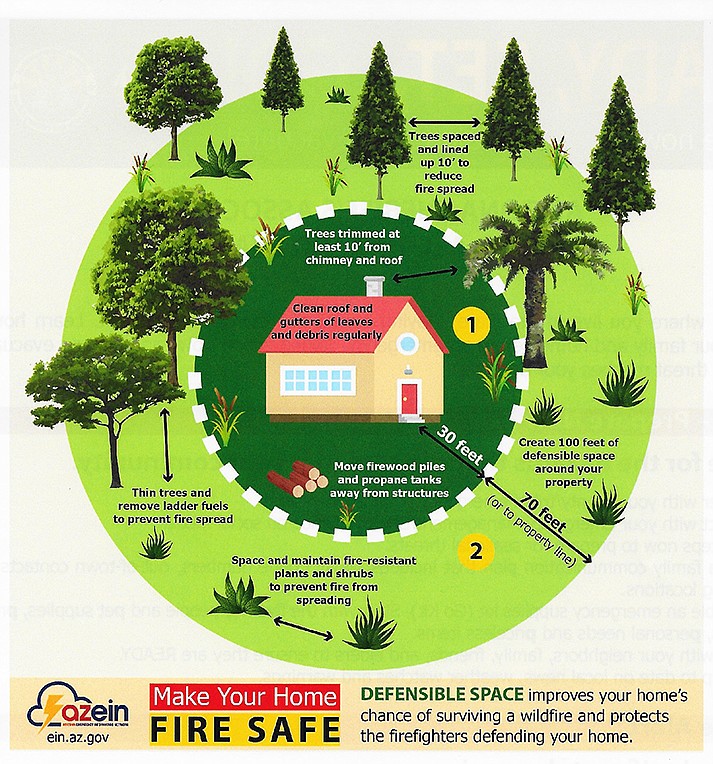Fire Wise: Situational Awareness
This articles from the Emergency Preparedness Planning Committee (EPPiC) of the Big Park Council (BPRCC), features the Sedona District Fire Chief, Jon Trautwein. See the article on the United States Forest Service (USFS) also featured in this month’s Villager to understand how the two organizations work together in a wildfire emergency.
Although the Fire District handles fire management (structure & wildland), emergency medical and rescue services, this article will focus on their role in a wildfire emergency.
Chief Trautwein reiterated assurances that first responders in Yavapai County and regional emergency responders work well together; supporting each other formally and informally during an incident.
He emphasized that as the VOC is located in a wildland interface area (adjacent to the national forests), residents need to have “Situational Awareness”. Just as the fire district prepares for fire season, residents should also do the same. While fire staff prepare with annual physicals, fitness training and coursework, resident readiness includes signing up for Code Red alerts, keeping a full tank of gas in vehicles, and having a Go Bag with prescribed medications and water. (Ready-Set-Go).
He noted that it would be wise for residents in the VOC to always be at the Ready stage. Fires in a wildland interface area are often started by humans and don’t necessarily correlate to the official wildfire season. There is also the danger that in a fast-moving fire, the situation will advance from Ready to Go suddenly, without a pause to get Set.
Resident readiness means being ready to “Go,” and perhaps leaving at the “Set” stage, but GO, when told to do so. Chief Trautwein explained that if residents wait to evacuate after they have been told to “Go,” they may prevent fire equipment from getting to the fire, while emergency equipment pulls off the road to allow evacuees to leave.
Folks needing special assistance (ADA) should register with the county, and HOA’s should “map their neighborhood”, knowing who will need extra assistance. Situational awareness and neighborhoods supporting their own residents, help first responders to protect us more quickly and efficiently.
In fighting the fire, Chief Trautwein noted that air support can come from a number of other agencies, primarily DPS from Flagstaff and sometimes the local Forest Service.
Sophisticated computer modelling is used to predict path, speed, and potential intensity of the fire. He explained their use of a system of Incident Management Teams comprised of fire service people from different units. They use a ranking of 1-5, one being the most complex. Command posts are set up for incidents that move to rankings 3, 2 or 1, at which time a public information officer (PIO) is assigned and real time information begins to be sent out via public service announcements. The fire marshal is the PIO for the Sedona Fire District.
Incident management includes face-to-face meetings with law enforcement (Yavapai Sheriff’s Dept. for VOC/BigPark) regarding evacuation. With increasing management resources, updates for the community become more frequent, including on the Fire District’s Facebook page. At this stage, dialing 9-1-1 will route your call to the appropriate service for local information updates and directions. If calling from a cell phone, staying on the line means that they can ping the tower to establish your location. During the first 12 hours of an incident, the team is focused on managing the fire, not on updating the community, meaning less information during this time.
To help residents prepare, the fire district supports the National Fire Protection Association (NFPA) Firewise program. Sedona Fire District inspectors will come to your HOA and/or personal property to do an evaluation and suggest improvements to minimize the fire damage risks. Note: Improvements are at the owners’ expense.
SUBMIT FEEDBACK
Click Below to:





